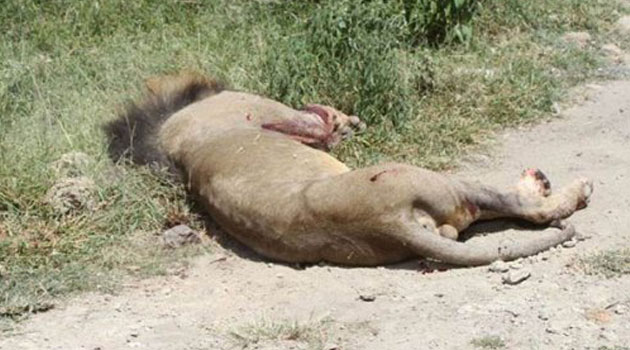
Currently, the lion population is estimated to be 2,000 in the country, with about 20,000 in Africa/FILE
NAIROBI, Kenya, Nov 30 – The lion population is on the verge of extinction with about 100 of them dying annually in Kenya.
Currently, the lion population is estimated to be 2,000 in the country, with about 20,000 in Africa.
The survival of carnivore populations in Kenya is severely threatened by habitat loss and anthropogenic activity, reduction in wild prey base, human-carnivore conflicts, disease, ignorance and misconceptions, road accidents and poorly managed tourism.
These species are threatened directly when they are killed due to threats on human beings and livestock.
Indirectly, they are killed when they get into snares set for other species. Poisoning, snaring for ungulates and spearing, all are major threats.
Poisoning is perhaps the single greatest threat to carnivores and scavenging birds.
It is in this regard that the ICEA Lion General Insurance Company has partnered with the Kenya Wildlife Service to carry out a country wide lion population census.
CEO Steven Oluoch says the census will help address the dwindling number of lion population.
“We picked the lion because it’s iconic and close to our brand and more so because much of the attention has been to the elephants and rhinos. By looking at the statistics the figures are shocking with the numbers reducing over time because of human wildlife conflict,” said Oluoch.
Due to human population growth, people have encroached into wildlife areas thus reducing the area where wild herbivores range.
This coupled with competition for pasture with domestic stock and illegal hunting by the communities has led to reduction in wild prey numbers.
“Also, carnivores are susceptible to retaliatory killing especially when they predate on livestock,” noted Oluoch.
Carnivore conflict hotspot areas are mostly in the Maasai Mara, Kajiado, Amboseli, Tsavo, Samburu, Laikipia, Lamu and mountain region areas.
Oluoch also emphasized on the need for other corporates to join in the conservation efforts.
“Kenya is a beautiful country and yet we don’t appreciate the wealth that has been bequeathed to us. We want to take it beyond our corporate goals and get involved with organizations or initiatives that play in that creation of wealth,” noted the CEO.
The Maasai Mara, Ewaso Lions and Big Life Foundation will also be involved in the two-year long project that will be launched on Friday and set to kick off in January 2017.








































